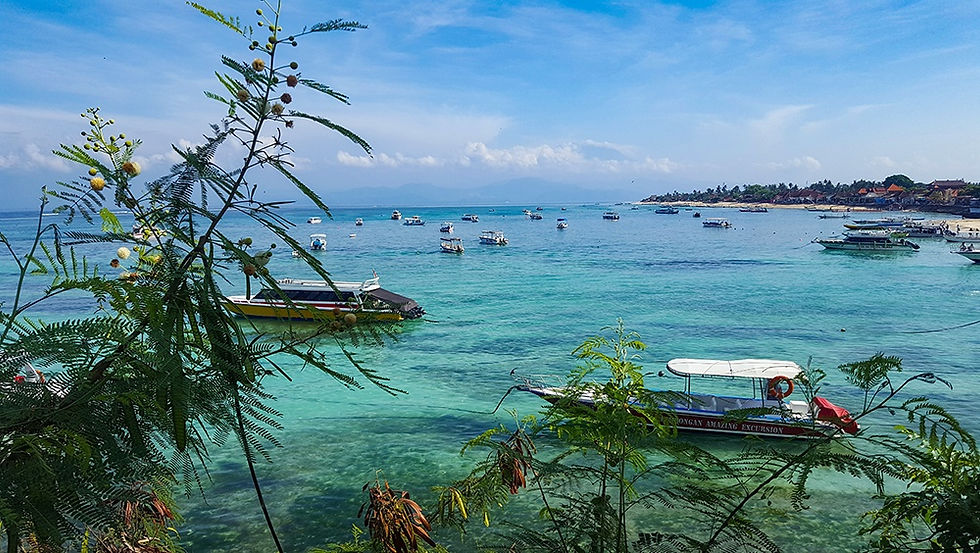The Telaga Waja River
- Shannon
- Sep 18
- 4 min read
Flowing Through History - Telaga Waja’s Role in Life and Lore
The Telaga Waja River, flowing down the verdant slopes of Mount Agung in East Bali, is best known today for its rafting adventures but beneath its rushing waters lies a deep, often overlooked historical and cultural undercurrent. Historically, this river has served as both a geographical and spiritual artery for the people of Karangasem. It provides water for rice fields through a traditional irrigation system called subak and many Balinese believe it to be sacred. As with most natural elements in Balinese Hinduism, rivers like Telaga Waja are seen as channels of life force, yet they can also carry ancestral spirits and act as thresholds between the human world and the unseen realm.

Local oral traditions whisper that the river was once guarded by a water spirit known as Jero Gede Banyu, a powerful guardian who demanded respect and ritual offerings. Villagers believed that failure to honour this spirit could result in sudden floods or drownings, not mere accidents but acts of retribution. According to legend, a priest once defied the spirit by building a temple too close to the riverbank without the proper purification rites. Within weeks, heavy rains caused the river to swell and devour the entire structure. The temple’s stones, it's said, still lie buried beneath the water and on certain days, the chanting of trapped spirits can be heard echoing from below.

Another darker layer of history overlays Telaga Waja during the mid 20th century, specifically during the 1965 - 66 anti communist purges that swept across Indonesia, including Bali. The remote eastern regions were not immune. Witness accounts from Karangasem describe mass executions carried out near riverbanks, with victims thrown into rivers to be “cleansed” and carried away. Telaga Waja, with its swift current and secluded bends, was reportedly one of the sites used for these killings. Elders in nearby villages speak in hushed tones about seeing the waters run red or catching glimpses of restless spirits along the riverbanks during the rainy season.
Bali’s concept of sekala (the seen world) and niskala (the unseen) gives rise to persistent beliefs that Telaga Waja is haunted. Offerings known as canang sari are sometimes left on river stones by locals, not for the gods but for the pengiang (wandering souls) of those who died tragically. Rafters and fishermen occasionally report cold spots or the feeling of unseen hands tugging at their clothes. While outsiders might dismiss these as superstition, for locals, the rituals are a form of spiritual hygiene, maintaining harmony between the living and the dead.

The river’s proximity to Mount Agung, a volcano considered the axis of the Balinese spiritual cosmos, intensifies its mystique. When Mount Agung last erupted in 1963, Telaga Waja became a conduit for lava flows, carrying volcanic mud and ash through villages. Survivors of the eruption described the river as turning into a “serpent of smoke and fire” and many linked the disaster to spiritual imbalance or broken taboos. Some priests even interpreted the eruption as divine wrath, possibly tied to the earlier violence of the purges, as if the earth itself was rejecting the blood spilled in silence.
Today, while tourists paddle through Telaga Waja’s rapids, few realise they are gliding over centuries of history, some celebrated, some buried. The river is a living palimpsest, its beauty inseparable from its shadows. Whether as a source of life, a witness to trauma or a spiritual boundary, the Telaga Waja River remains one of Bali’s most compelling yet quietly haunted landscapes.
🗺️ Location
Telaga Waja River, Banjar Batusesa, Rendang Village, Karangasem, Bali, Indonesia
🚆 How to get there
The Telaga Waja River rafting start point in Muncan Village is about 60 km from Kuta (roughly 2 hours by car), 42 km from Ubud (around 1.5 hours) and just 15 km from Sidemen (30–40 minutes). Travel times can vary with traffic and you'll need to allocate 7-8 hours for the whole trip. All tour operators will collect you from your hotel and drop you back again. There are HEAPS of tour operators available online or in person.
⭐ Attraction Info
The Telaga Waja River rafting experience covers 16 kilometres over about 2.5 hours, with Class III–IV rapids that are exciting yet safe for beginners, non-swimmers and children. The river is shallow and rocky, with easy access and no steep climbs at the start, making it ideal for first-timers. Before setting off, guides provide all necessary safety gear and a detailed briefing. The route offers beautiful views of waterfalls, clean river water and lush farmland. A mid-journey stop at a waterfall lets you grab snacks and cold drinks and the trip ends with a simple buffet lunch. Wear strapped sandals, swimwear & sunscreen and bring cash for extras. Morning and afternoon tours are available, with prices ranging from 400,000 to 900,000 IDR per person, depending on group size and transport options. Don’t forget to bargain and for an extra thrill, you can add a zip-line ride over the river to your raft (highly recommended!).

Thanks for reading about The Telaga Waja River (and Rafting). Check out more awesome destinations here!


















